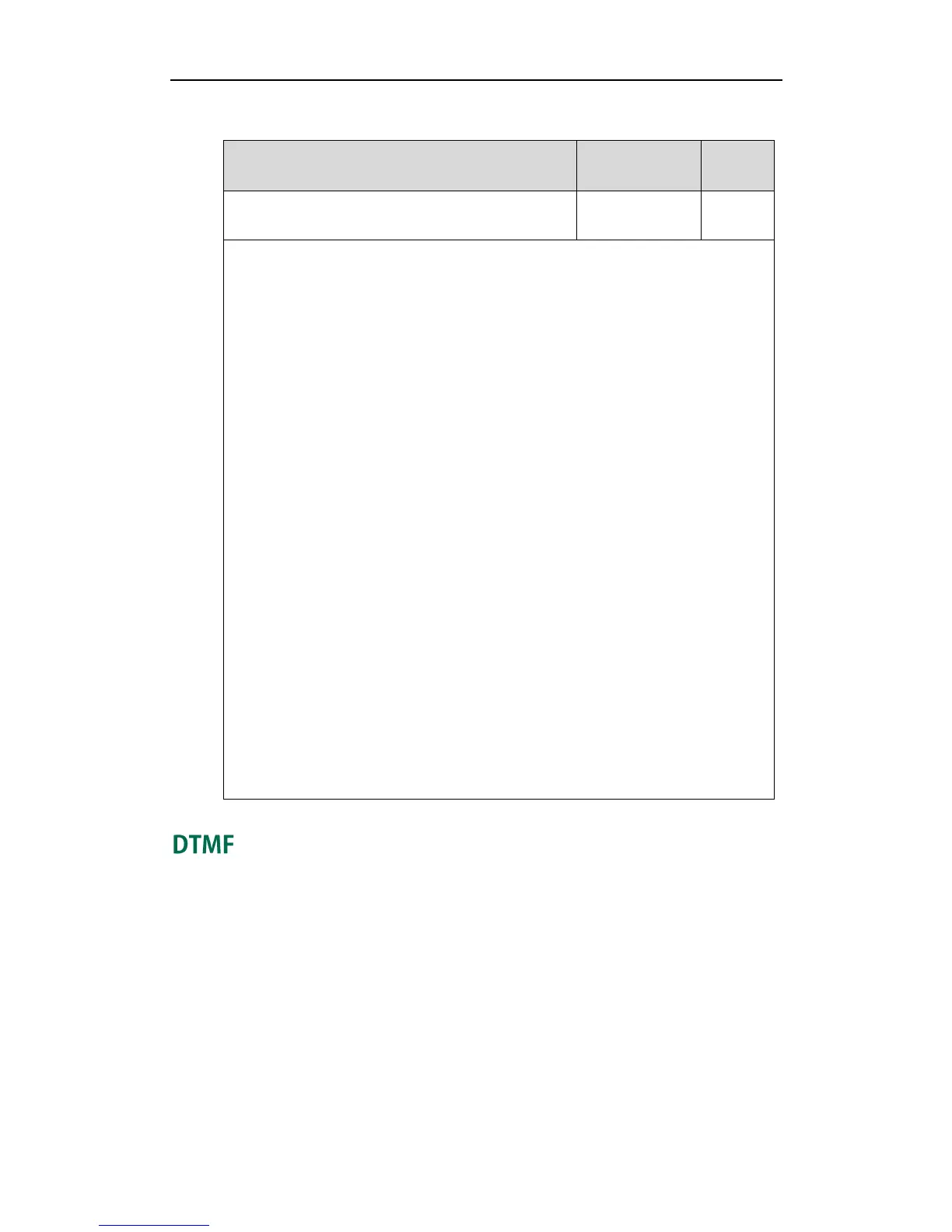Description:
Configures the presentation of the callee’s identity for account X.
0-PAI-RPID (Derives the name and number of the callee from the “PAI” header
preferentially. If the server does not send the “PAI” header, derives from the “RPID”
header).
1-Dialed Digits (Preferentially displays the dialed digits on the caller’s phone).
2-RFC 4916 (Derives the name and number of the callee from “From” header in the
Update message).
When the RFC 4916 is enabled on the IP phone, the caller sends the SIP request
message which contains the from-change tag in the Supported header. The caller
then receives an UPDATE message from the callee, and displays the identity in the
From header.
X ranges from 1 to 16 (for SIP-T48G/T46G/T29G).
X ranges from 1 to 12 (for SIP-T42G).
X ranges from 1 to 6 (for SIP-T41P/T27P).
X ranges from 1 to 3 (for SIP-T23P/G).
X ranges from 1 to 2 (for SIP-T21(P) E2).
Web User Interface:
None
Phone User Interface:
None
DTMF (Dual Tone Multi-frequency), better known as touch-tone, is used for
telecommunication signaling over analog telephone lines in the voice-frequency band.
DTMF is the signal sent from the IP phone to the network, which is generated when
pressing the IP phone’s keypad during a call. Each key pressed on the IP phone
generates one sinusoidal tone of two frequencies. One is generated from a high
frequency group and the other from a low frequency group.
The DTMF keypad is laid out in a 4× 4 matrix, with each row representing a low
frequency, and each column representing a high frequency. Pressing a digit key (such
as '1') will generate a sinusoidal tone for each of two frequencies (697 and 1209 hertz
(Hz)).

